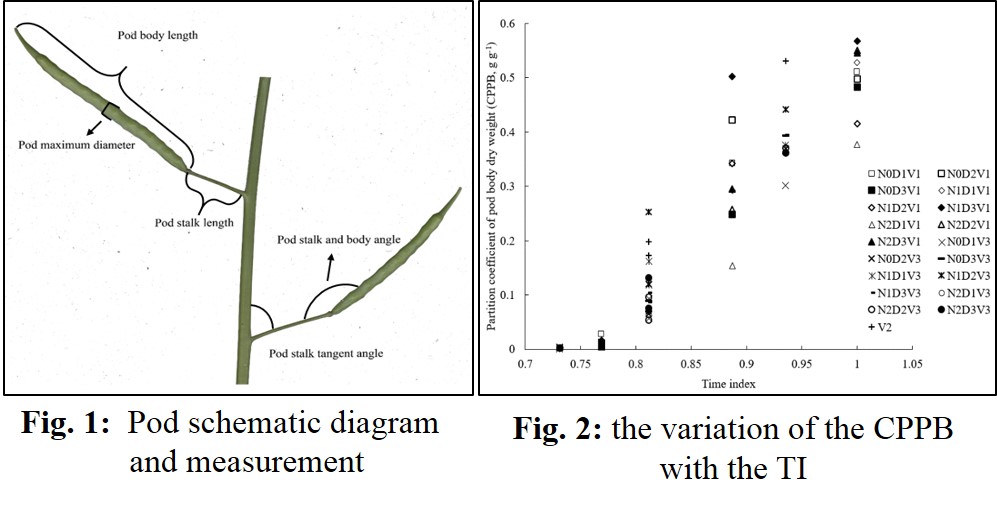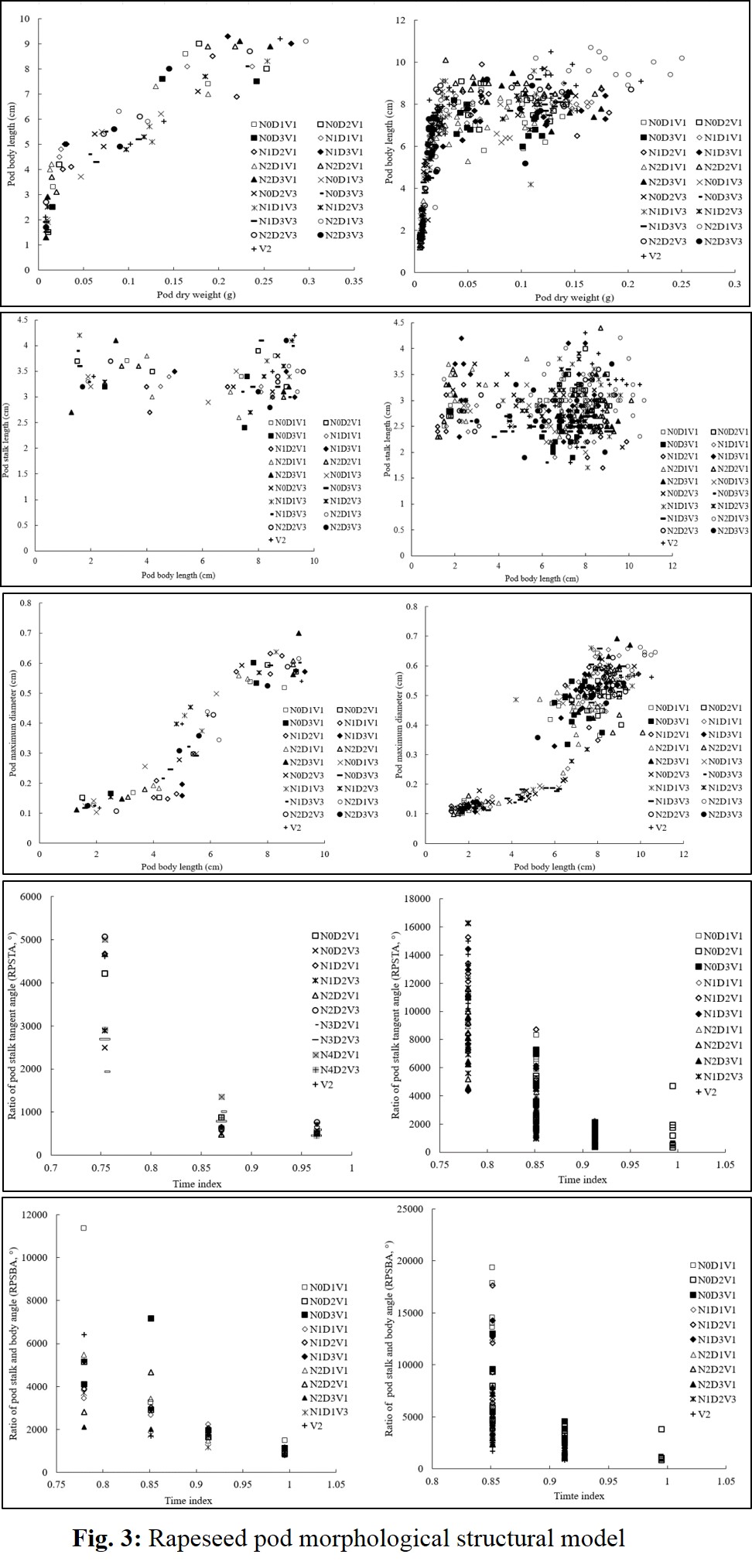In recent years, the research on the development of Rapeseed Functional Structural Plant Models (FSRMs) has become a new trend. However, it was only involved in the vegetative growth stage in the previous study, and the rapeseed pod morphological structural model based on the biomass has not yet been reported. The green pod is an essential organ of photosynthesis during the rapeseed maturity stage. It is both a sink and a source, which influences directly the photosynthetic capacity and final yield. Therefore, it is necessary to study the pod morphology that affected by the cultivars and environmental factors, and it is an indispensable part of the rapeseed plant morphological model. We explored the influence of the cultivars and environment conditions on the rapeseed pod morphology in the field experiment, linked the pod architecture parameters of rapeseed with biomass, by analyzing the field experimental data, and developing the rapeseed pod morphological structural model.
The results showed that the pod length (PBL) models proposed in this study can be connected the rapeseed growth model via organ biomass, and the plant growth models can achieve the combination of the structures with their functions, relate the effects of environmental factors on the rapeseed aboveground morphogenesis, and contribute to the development of the rapeseed’s FSPMs. As seen, from the dry matter production models, the biomass in canopy per area on the ith day after emergence (DWCP (i)) values derive from the rapeseed photosynthesis and dry matter production and leaf area index models, and we can estimate the responses to the cultivars and environment factors on DWCP (i) values by the models. With regard to the pod stalk length (PSL) models and pod maximum diameter (PMD) models, the PBL was selected for an independent variable, which could help the rapeseed geometrical parameter models more simplified and flexible. The PSL models were represented by the quadratic function and the PMD models could be described by a power function. Both of the ratio of pod stalk tangent angle, RPSTW (i) and the ratio of pod stalk tangent angle RPSBW (i) of different cultivars changed with the time index (TI) on main anthotaxy axis and Primary Ramification anthotaxy axis could be expressed as the power function. All of the models were validated with the independent experiment data, and the results suggested that these variables in rapeseed were remarkably consistent in observation and simulation. The partitioning coefficient values of pod biomass (CPPB) had a significant level at p<0.001, the RMSE values, and the da values were all small. Our descriptive models proposed in this study have a good mechanism and interpretation, and the ratio of the pod body length to pod biomass (RPLW), and the ratio of the pod stalk tangent angle (RPSTW), and the ratio of the pod stalk and body angle (RPSBW) were analyzed initially, which are able to correlate the organ biomass with its morphogenesis.
This study has developed a model to quantify the relationships between the rapeseed pod architecture indices and the corresponding organ biomass. These results would provide a mechanism method for linking the rapeseed growth model with the rapeseed morphological model via biomass, and promote the development of the Functional Structural Rapeseed Models (FSRMs), and the plant phenotypic group for rapeseed.




